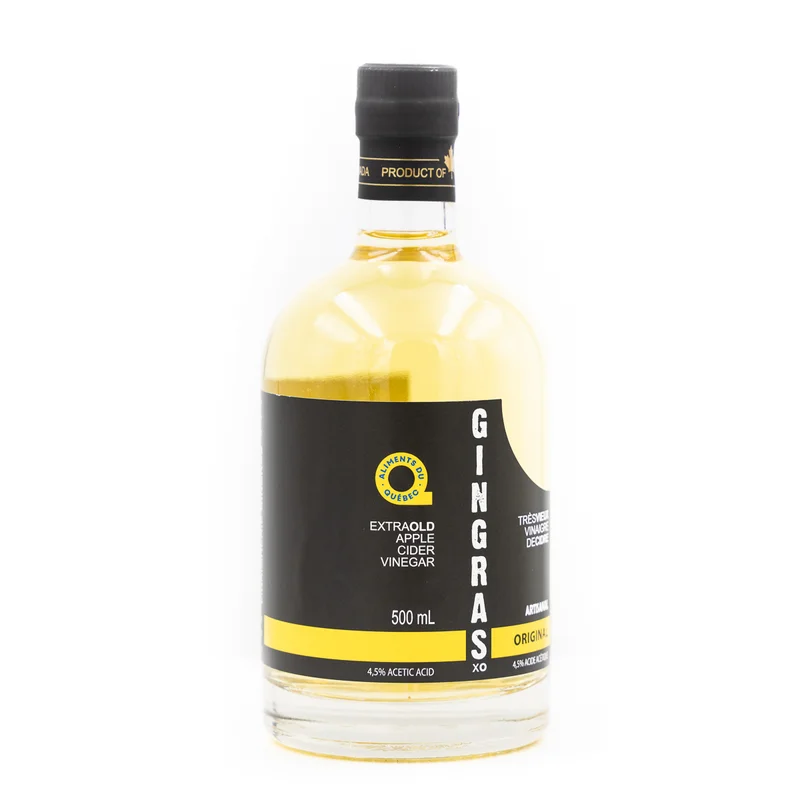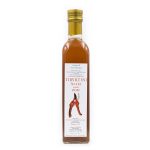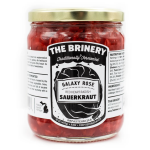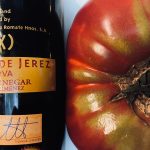Excerpt from Ari’s Top 5 enews
A humble ingredient in the Roadhouse pulled pork barbecue & super for your salads at home
 Gingras apple cider vinegar might well be one of the humblest ingredients we have on hand. It gets very little attention and it’s almost never written about in articles, but its quality contributes quietly to the full flavor and delightfulness of any number of better known Zingerman’s dishes.
Gingras apple cider vinegar might well be one of the humblest ingredients we have on hand. It gets very little attention and it’s almost never written about in articles, but its quality contributes quietly to the full flavor and delightfulness of any number of better known Zingerman’s dishes.
It’s probably been twenty years now since I tracked down this terrific vinegar. As I was doing the research for the little pamphlet that became Zingerman’s Guide to Good Vinegar, I kept reading about how apple cider vinegar was at the core of colonial cooking. It was in every old American cookbook. And yet, when I looked around the modern day marketplace—filling up as it was with artisan offerings from Europe—I couldn’t find traditionally made cider vinegars. This was in the days before the internet, so tracking down obscure items took more than two minutes. Many months later, I got the name of Pierre Gingras, a vinegar maker in Montérégie, about 45 minutes southwest of Montréal.
The Gingras family have been doing pretty much everything a vinegar fan would want for decades. Apples are grown organically, then hand-picked specifically to be pressed for vinegar. Most commercial cider vinegar is made by pressing the “dregs” left behind after a first pressing is done for fresh cider. No windfalls are used. (If you hadn’t realized it, the name windfall originally had nothing to do with finance—it’s about fruit that falls from the tree in heavy winds. Windfalls are easy to gather but have been bruised and begin to oxidize immediately thereafter). The vinegars are made using old school natural conversion (known as the Orleans method, after the French city on the Loire River), then matured for over twenty-four months in French oak barrels. The vinegar is unpasteurized and unfiltered. Most importantly, it tastes terrifically like apples!
The region of Montérégie was settled ages ago by Iroquois people. Europeans arrived in the 17th century and brought apples with them. Thanks to the naturally favorable growing conditions, the region soon came to specialize in apple growing. Charles Gingras arrived from France in 1669 and began farming a few years later. His great grandson Wilfred began the family’s focus on apples and went on to plant about 2500 trees. Pierre took over around the time we were opening the Deli in the early 80s and began a fresh apple juice business and followed that with vinegar making. The quality of the vinegar and Pierre’s passion for traditional processes gained greater and greater attention. Eventually tens of thousands of visitors a year were coming to tour the fields and the facilities. In 2017, Vinaigrerie Gingras was bought by the Levasseur family, long time apple growing owners of Au Coeur de la Pomme in the nearby town of Frelighsburg. (Sir Nicolas-René Levasseur, born in Dunkerque, France, settled in Quebec in the middle of the 18th century.)
Gingras packs the vinegar into glass bottles so you can see the natural mother of the vinegar floating inside. It’s a wispy bit of a white cloud that you may—or may not—see in each bottle depending on how the vinegar comes out of the barrels. If you do see some of the mother, know that it’s totally edible and actually packs extra enzymes, minerals, and vitamins. If I were to work on a list of Natural Laws of cooking, one of the first I’d put down would be that the better the quality of the raw materials you use, the better the flavor of the finished dish is likely to be. Gingras apple cider vinegar costs over ten times as much as the mass market commercial cider vinegars that nearly everyone else uses. But it tastes so much better!
Read on about vinegar here!




